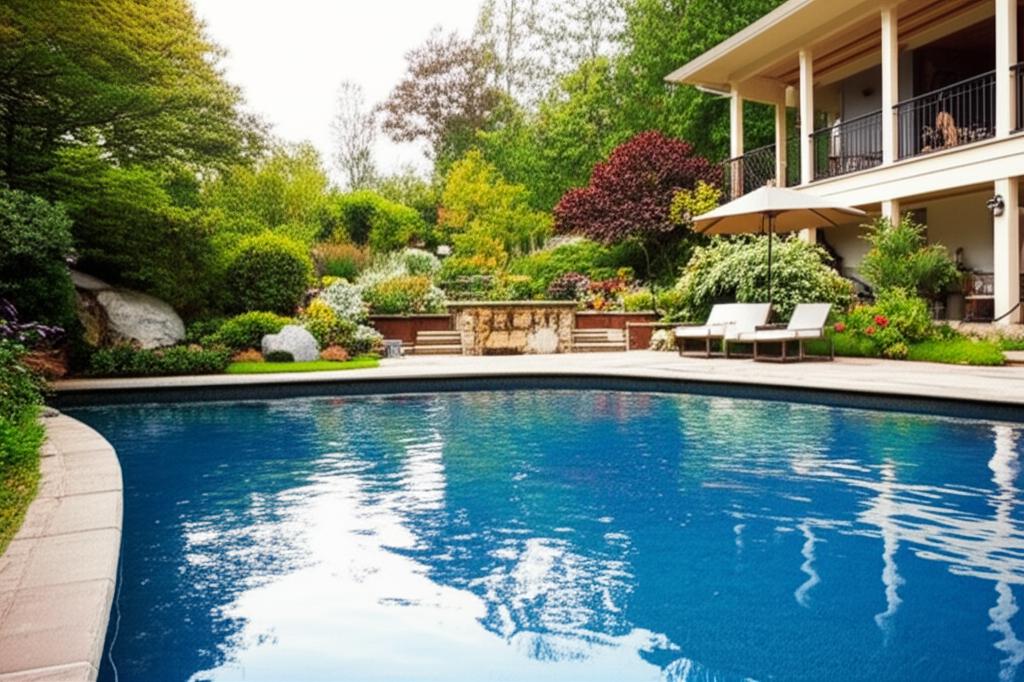Biophilic Design: Transforming 2025 Landscape Trends
Feeling overwhelmed by a cluttered yard or longing for a garden that pulses with life? Many homeowners share this desire for outdoor spaces that soothe the mind, welcome wildlife, and enrich daily routines. Biophilic design offers a powerful solution, and in 2025, it is redefining landscape trends in communities of all sizes. This approach integrates nature into outdoor spaces, creating environments that nurture both people and the planet.
Why Biophilic Design Is Essential in 2025
Biophilic design weaves natural elements, patterns, and processes into landscapes, fostering well-being and supporting local ecosystems. Three key drivers fuel its rise this year. Research increasingly shows that time spent in nature reduces stress, boosts focus, and strengthens immunity. Additionally, climate challenges demand regenerative practices that preserve soil, water, and biodiversity, while homeowners seek vibrant, adaptable spaces as home life becomes more central.
At Dickinson's Garden Center, these drivers shape our plant selections, soil strategies, and design projects. The trends we highlight are practical, rooted in real installations for homeowners seeking beautiful, enduring landscapes.
Core Principles of Biophilic Landscapes
Five foundational pillars ensure a design deeply connects with nature:
- Nature in the Space: Incorporate visible plants, water features, and tactile natural materials.
- Nature of the Space: Use spatial layouts mimicking natural patterns like clustering for intuitive comfort.
- Natural Analogues: Choose textures, colors, and shapes that evoke natural surfaces.
- Nature of the Place: Reflect local ecology, climate, and culture in plant and material choices.
- Experience of Nature: Engage all senses through sight, sound, smell, touch, and even taste.
Each 2025 trend ties to these principles, ensuring your landscape feels cohesive and purposeful.
Top 10 Biophilic Landscape Trends for 2025
1. Native Plant Dominance
Native species thrive in local conditions, needing less water and supporting pollinators. Designers now prioritize hyper-local selections, such as Black-eyed Susans in Ohio or Douglas fir in Oregon. Sales of native perennials surged in 2024 per USDA data, with momentum building into 2025.
2. Regenerative Soil Practices
Healthy soil sustains plants and sequesters carbon. Techniques like compost layering, mycorrhizal inoculation, and biochar enhance structure and moisture retention. Many firms offer soil testing and monitoring services; at home, start with compost and a simple moisture probe.
3. Climate-Adaptive Microclimates
Designers craft protective zones for plants and people. Windbreak hedges of willow or hazelnut shield against harsh winds, while stone walls store daytime heat for cool-season crops, extending growing periods.
4. Technology-Enhanced Nature
Smart tools complement biophilic goals. Irrigation controllers adjust to real-time weather data, and LED lighting mimics sunlight for plant and human health. Augmented reality apps help visualize mature designs before breaking ground.
5. Multi-Sensory Outdoor Zones
Spaces that engage the senses feel restorative. Pebble waterfalls and rustling grasses layer sound, while paths of river stones and moss invite tactile exploration. Fragrant plants like lavender or dwarf citrus add seasonal aromas.
6. Edible and Medicinal Plantings
Food forests with fruit trees, shrubs, and herbs offer harvests and connection to place. In urban yards, vertical herb walls within pergolas provide fresh basil or mint year-round.
7. Water-Conscious Features
Rain gardens capture runoff and filter pollutants, while closed-loop ponds with solar aerators support amphibians with minimal water use. These designs prioritize stewardship in every region.
8. Modular Natural Shelters
Prefabricated pods of timber and glass create flexible spaces for work or relaxation. Their natural materials blend seamlessly with surrounding greenery and allow easy reconfiguration.
9. Low-Impact Material Choices
Sustainable materials reduce environmental footprints. Reclaimed pine decking adds character, while biosynthetic concrete cuts carbon emissions. Natural fiber rugs like jute offer texture without synthetics.
10. Health-Centric Design Areas
Landscapes now include zones for wellness. Quiet corners with soft sounds aid meditation, while open lawns framed by plant screens support active play or yoga with privacy.
Actionable Steps to Start Your Biophilic Journey
Begin with small, manageable tasks to transform your yard. Observe sun and wind patterns over a weekend, sketching a simple map of light and drainage. Test soil texture by forming a moist clod; if it ribbons, add compost to loosen clay. Select a native tree or shrub as a focal point, layering smaller plants for habitat and interest.
Integrate water wisely with a weather-responsive drip system or a rain garden at low points using wet-tolerant natives. Build soil health with compost and biochar, and opt for permeable pavers or reclaimed wood for hardscaping. Maintain progress with monthly irrigation checks and seasonal soil tests to refine your approach.
Simple DIY Projects for Instant Impact
- Rain Barrel Setup: Repurpose a drum with a spigot to collect roof runoff, saving water in hours.
- Moss Groundcover: Seed shaded areas for a soft, low-care lawn alternative.
- Bamboo Privacy Screen: Install a portable frame for a natural, tactile backdrop.
Design Tips to Deepen Nature Connections
Place fragrant shrubs along daily paths for subtle sensory boosts. Group native plants in bold drifts to attract pollinators and create vertical habitat. Use reclaimed materials and muted tones in hardscaping to let greenery shine.
Support from Dickinson's Garden Center
Our center provides locally sourced native plants, a soil health lab for testing with compost purchases, and certified designers offering 90-minute Biophilic Blueprint sessions. Workshops on rain gardens, edible forests, and smart irrigation equip you with skills to enhance your space.
Build a Landscape That Nurtures
Take one achievable step today, whether measuring soil, mapping sunlight, or planting a native shrub as your design anchor. These actions compound, crafting a yard that cuts maintenance, supports wildlife, and becomes a sanctuary. Biophilic design restores nature to daily life, blending beauty with resilience. Visit Dickinson's Garden Center or schedule a session to turn your vision into a thriving, sensory-rich outdoor haven.
